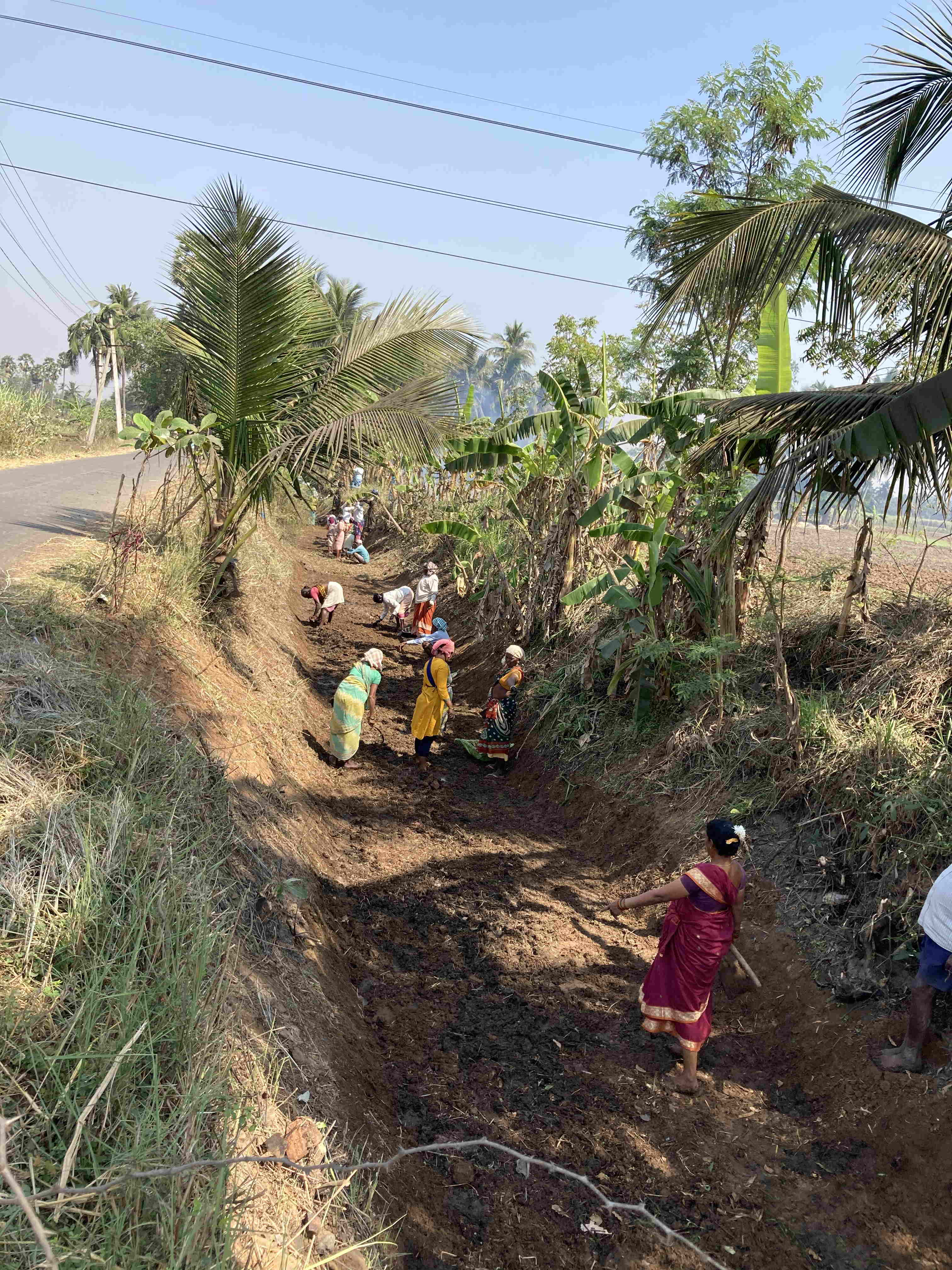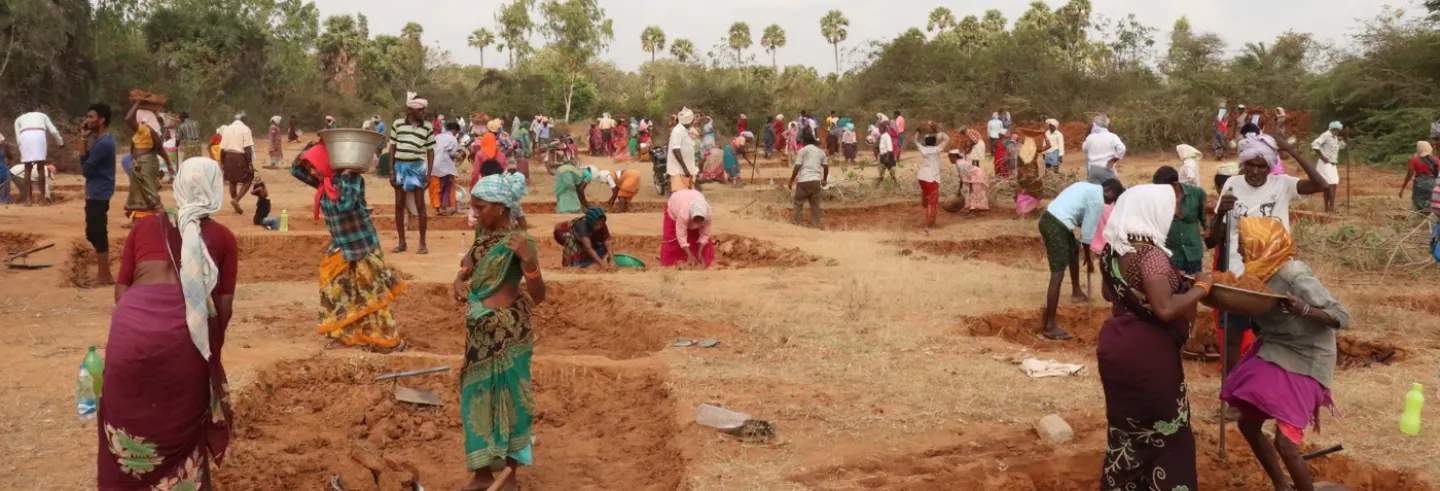As social security programmes are increasingly 'technologised', it becomes increasingly important to invest time and effort in understanding the technical infrastructure on which they are run. One of the largest such programmes in India, the Mahatma Gandhi National Rural Employment Guarantee Act (MGNREGA), runs entirely on a Management Information System (MIS). An MIS is a digital system that not just collects, stores, and disseminates information, but also acts as the infrastructure on which the programme is run.
From recording attendance and employment to the processing of payments, the MIS is the 'operating software' for the MGNREGA. To begin with, Andhra Pradesh and Telangana (the two Telugu states) used their local MIS to oversee the MGNREGA while its implementation in all the other states was administered by a MIS of the National Informatics Centre (NIC). In 2021–2022, the Ministry of Rural Development (MoRD) decided that the Telugu states had to migrate to the MIS used by the rest of the country.
Since then, the NIC-managed MIS has had several unintended effects on the functioning of the MGNREGA in Telangana and Andhra Pradesh because it does not have many of the worker-centric features that the local MIS had. The union government’s desire to ensure uniformity of the MIS across the country has thus resulted in workers losing income, employment, and access to information. And village-level implementing officials face new challenges in carrying out their duties using an unfamiliar MIS.
1. Loss of Income
1.1 Summer allowance
In the Telugu states, historically, the summer months have accounted for approximately 85% of the total annual employment generated under the MGNREGA. A summer allowance is paid to MGNREGA workers in both the Telugu states as an incentive to participate during the peak summer months. An additional allowance of 20% of the wage was paid in February, 25% of the wage in March, 30% of the wage in April and May, and 20% of the wage in June. This has been discontinued to bring Telangana and Andhra Pradesh on a par with the other states in the country.
1.2 Soil classification
MGNREGA workers in the Telugu states used to get paid at varied rates based on the type of soil they worked on and the MIS had provisions to record these differences. For example, for a trench of the same size dug in loose soil and on a rocky terrain, the workers on the latter used to be paid more. The NIC-managed MIS does not have the capability to record soil classification, which means that workers from the Eastern Ghat and the Deccan Plateau regions will lose out. The wage loss can vary from 10% to 30%, depending on the category of work.
2. Loss of Employment
2.1 Muster norms
Muster rolls are generated by MIS to record attendance for wage seekers. The new muster norms mark a day as a workday even if a person is absent after muster generation. Earlier, only days that had the full participation of workers were counted as workdays. This means that if people are marked absent, they not only lose a day’s wages but also lose one workday out of the 100 they are entitled to. This change affects the number of days a family can actually work.
For example, a woman worker from the Dongria Kondh community in the Paderu region of Andhra Pradesh was on the muster rolls for 99 days but had attended work only on 82 days. She was unaware of the allocated work on the days that she could not attend because she lived at a distance from the worksite. However, the days marked absent are also counted as workdays now. The MGNREGA portal managed by the NIC does not allow her to work on the remaining 18 days of employment that she is actually entitled to, which means a loss of about Rs 3,600 to her.
With the dual muster system, a household in Andhra Pradesh could have earned Rs. 25,700 for 100 days of work in FY 2022–23. But it now earns only Rs. 21,000.
This rule violates the principle of fairness, which holds that workers must be treated justly and equitably. It penalises workers for circumstances beyond their control, such as a sudden illness in the family or other unexpected problems. It is important to note that government employees have emergency leave provisions and denying this to other workers is unfair. The new method of counting workdays has also made it difficult for workers to keep track of their employment.
Further, muster sheets are not printed in the local language, making it difficult for the workers and local officials to understand them. This presents a significant challenge to workers in terms of transparency and accountability, and it also increases the likelihood of false attendances.
2.2 Dual muster system
Muster rolls are used in the MGNREGA to record the attendance of workers at the worksite. In the dual muster system in Andhra Pradesh, the wages are not solely calculated based on the number of days a person attends for work, but rather on the work completed by each wage seeker. For instance, if wage seeker Bhaskar was assigned to dig a meter of trench in a day but he finished it in two days, the dual muster counts his two days of attendance as one workday towards the 100 days of guaranteed employment. If this was not so, he would lose one day of work, resulting in a loss of annual income for him. The migration of the MIS has led to the dual muster system being discontinued.

In the MIS managed Andhra Pradesh, the dual muster system benefited workers by enabling them to earn a higher annual income. With the dual muster system, a household in Andhra Pradesh could have earned Rs. 25,700 for 100 days of work in FY 2022–23. But they now earns only Rs. 21,000, which is 14% decrease in its annual income from the MGNREGA.
3. Loss of Political Capacities
Political capacity was defined by James Manor and Rob Jenkins in their influential work Politics and the Right to Work: India’s National Rural Employment Guarantee Act in four dimensions: a worker’s awareness, connections, confidence, and skills. In Andhra Pradesh and Telangana, workers were organised into fixed labour groups known as Srama Sakti Sangham (SSS) groups and they motivated others to take up jobs under the MGNREGA, while also acting as platforms for conveying information. They contributed to enhancing the political capacities of the workers there.
The MIS of the NIC lacks the SSS group component and the migration from the old systemt has diminished the political capacity of workers in Telangana and Andhra Pradesh. The migration has also undermined accountability and transparency at the lowest level by removing data on the top performing workers from the MIS, data which was used to designate a worker to oversee the implementation at the worksite as a field assistant.
4. Information Access
The MIS managed by the Telugu states had a simple search bar to help workers, community organisations, and field-level officials find out details about the work, number of days worked, the payment credited, and history of reject or pending cases. To find out the same details on the NIC-managed MIS, one now has to go through multiple reports, which is something close to impossible for the large majority of the stakeholders in the MGNREGA.
5. Job Card Deletions
Except in cases of death, no job cards of workers were deleted in the MIS handled by Telangana and Andhra Pradesh. A worker could be either active or inactive, and the MIS would assign work if an inactive worker demanded it. In contrast, under the MIS managed by the NIC, if workers’ job cards are deleted for some reason, they are required to apply for a new job card, which can be a time-consuming and laborious process. Only after obtaining a new job card can they demand work again.
6. Challenges for Officials
The migration to the NIC-managed MIS has also been challenging for local officials. Mallikharjun (name changed), a field assistant from the former Mahbubnagar district, reported that he now spends at least 10 times more time booking “MGNREGA work demands” for 650 registered workers in his village because of the new MIS. The state system had allowed group bookings for workers in a single transaction, but the new system requires each worker to be recorded individually, with the start and end dates for each job specified on their job cards.
The NIC-managed MIS does not have some of the successful elements of the state-managed MIS, which was developed through the contributions of workers and civil society, using a bottom-up approach to maximise outcomes.
Local officials also reported that they used to have quick access to technical support on the MIS when it was managed by the states, but now have to wait for several weeks to receive any response from the NIC on grievances or support.
Reports on each of the nine Integrated Tribal Development Agencies (ITDA) in the Telugu states were under a separate section in the MIS they managed. They were valuable to project officers for reviewing the programme and providing instructions to field-level officials to improve its execution. The ITDA reports were customised to suit the distinct needs of the tribal areas. But this feature is not available in the NIC-managed MIS. In general, providing aggregates for a specified time period in a chosen geography would be an excellent addition to the MGNREGA MIS.
In conclusion, the NIC-managed MIS does not have some of the successful elements of the state-managed MIS, which was developed through the contributions of workers and civil society, using a bottom-up approach to maximise outcomes. The centralisation was carried out without consulting workers or stakeholders in the Telugu states.
To improve the experiences of wage seekers and monitoring officials in Telangana and Andhra Pradesh, it is essential that the best practices from the earlier MIS be incorporated into the NIC-managed MIS. This would enable workers in this region to have better access to their rights under the Act, which would supplement their income.
Chakradhar Buddha and Venkata Krishna Kagga are researchers with LibTech India, which focuses on improving transparency, accountability, and democratic engagement in rural public services delivery.










